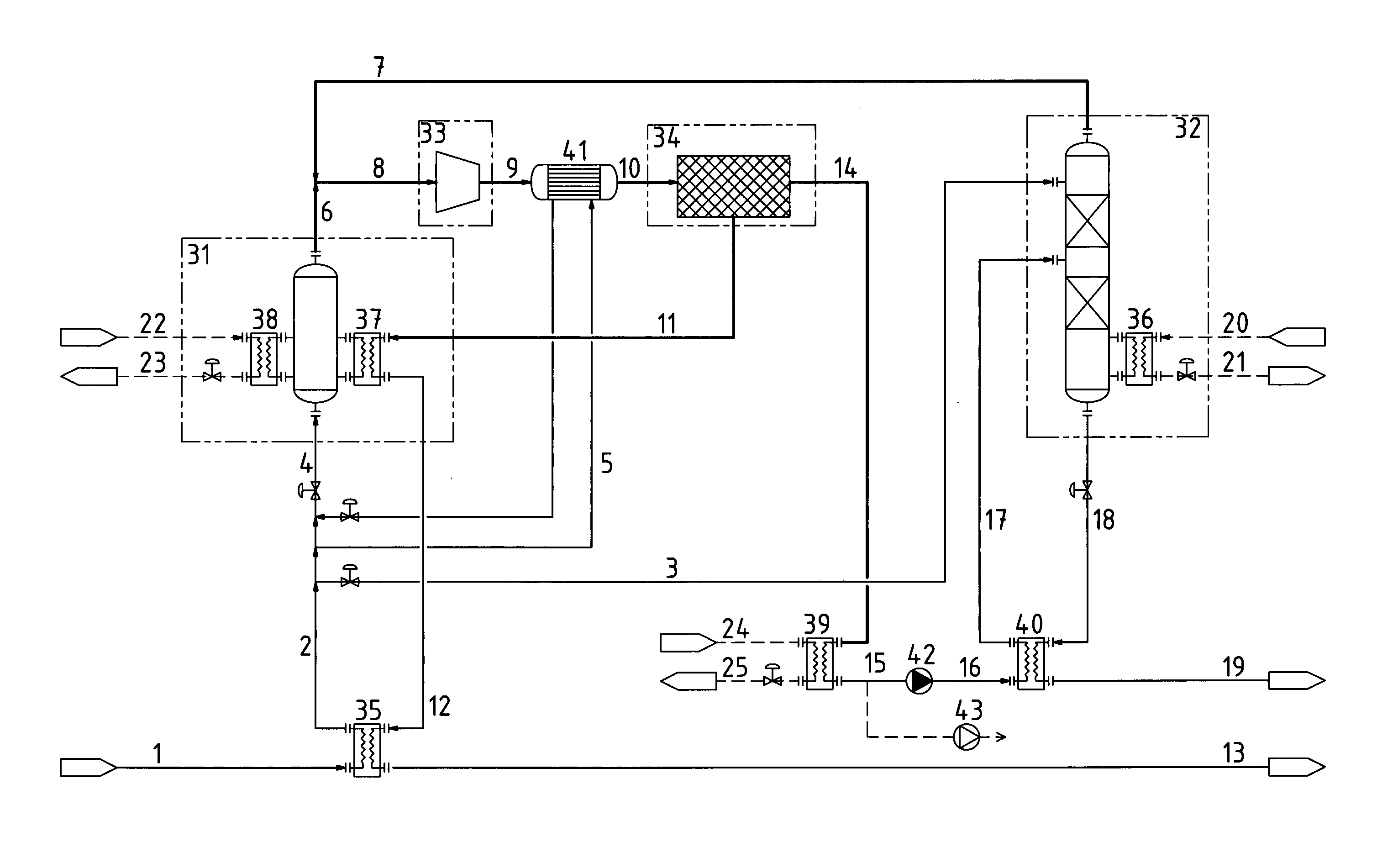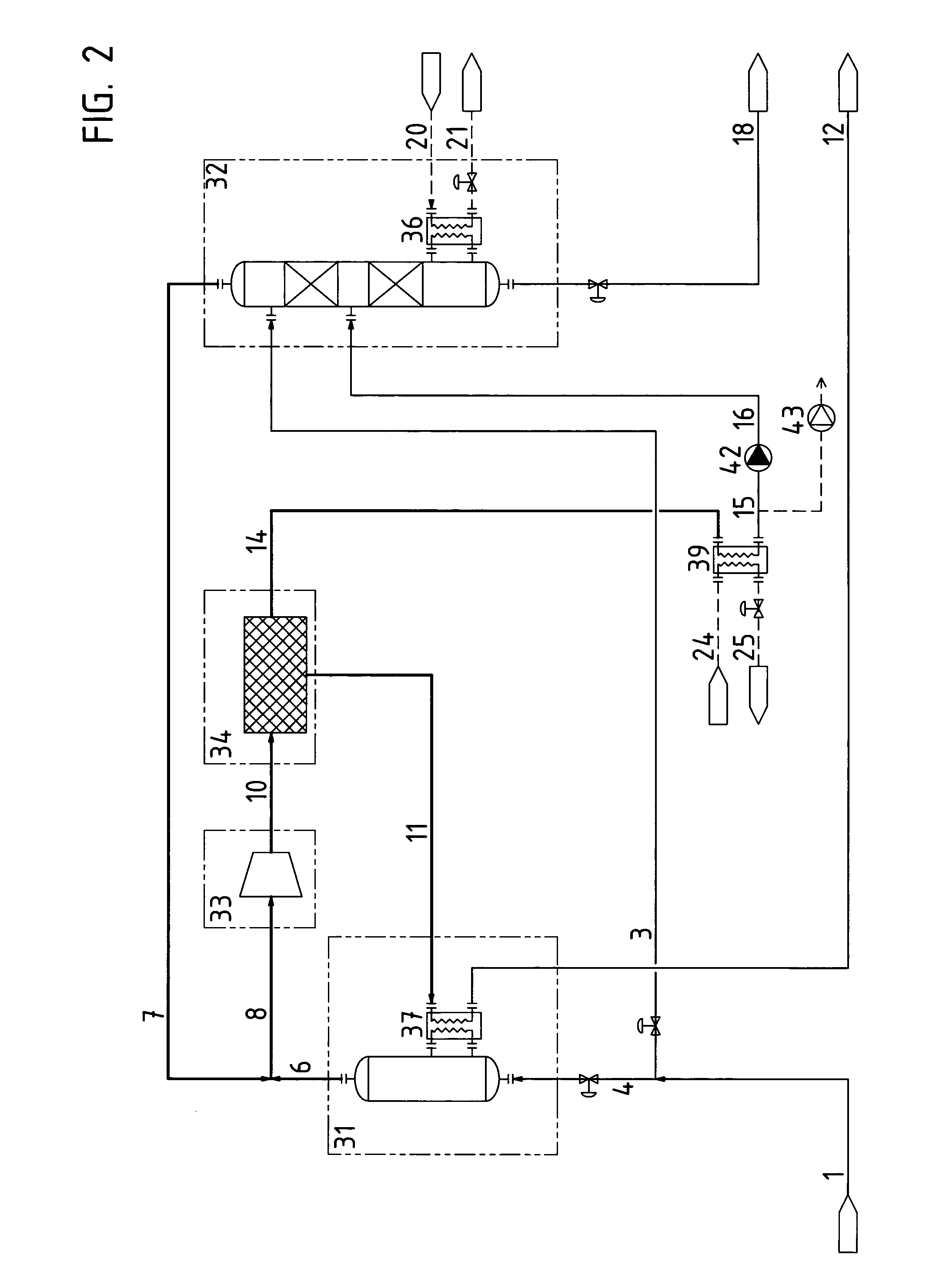Method for dewatering a mixture of mostly ethanol and water
a technology of ethanol and water, applied in water/sludge/sewage treatment, liquid carbonaceous fuels, separation processes, etc., can solve the problems of comparatively high energy consumption and chemical use, unoptimized for further use, and less robust pervaporation technique with respect to membrane li
- Summary
- Abstract
- Description
- Claims
- Application Information
AI Technical Summary
Benefits of technology
Problems solved by technology
Method used
Image
Examples
Embodiment Construction
[0018]FIG. 1 is a flow chart of a preferred embodiment of the present invention.
[0019]FIG. 2 is a flow chart of a simpler embodiment of the present invention.
[0020]It should be understood that the exemplification in the form of specific figures below is related to a plant comprising a dewatering unit 34 based on vapour permeation if nothing else is indicated. All indications of relative amounts of process flows are as % by weight unless otherwise specified.
[0021]FIG. 1 shows how a supplied ethanol rich feed flow 1 is preheated in a heat exchanger 35 to a preheated feed flow 2 and thereafter split into a first partial feed flow 3, a second partial feed flow 4 with an internal flow 5 that is further preheated in heat exchanger 41. First partial feed flow 3 is charged to a distillation column 32 where it enters as a reflux flow while second partial feed flow 4 enters an evaporator unit 31. First partial feed flow 3 normally corresponds to less than 20% of feed flow 1. The evaporator ou...
PUM
| Property | Measurement | Unit |
|---|---|---|
| thermal energy | aaaaa | aaaaa |
| liquid flow | aaaaa | aaaaa |
| energy | aaaaa | aaaaa |
Abstract
Description
Claims
Application Information
 Login to View More
Login to View More - R&D
- Intellectual Property
- Life Sciences
- Materials
- Tech Scout
- Unparalleled Data Quality
- Higher Quality Content
- 60% Fewer Hallucinations
Browse by: Latest US Patents, China's latest patents, Technical Efficacy Thesaurus, Application Domain, Technology Topic, Popular Technical Reports.
© 2025 PatSnap. All rights reserved.Legal|Privacy policy|Modern Slavery Act Transparency Statement|Sitemap|About US| Contact US: help@patsnap.com



